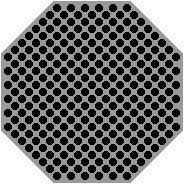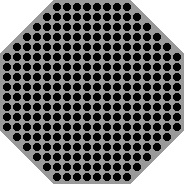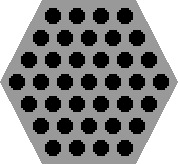one

1. Background. In the Roman Empire some 2000 years ago, as (plural asses) was a general term for any kind of measurement unit. Among other things, it was used for:
Although the Roman management of whole numbers was based on the number ten (I = 1, X = 10, C = 100, M = 1000, among others), fractions were often based on the number twelve, perhaps because this allowed convenient division into halves, thirds and quarters. The as was thus divided into twelfths, each called an uncia (plural unciae; adjectives uncial and unciary).
Today, unciary division survives in the United States, where the foot (304.8 millimeters) is divided into twelve inches, and the troy pound (373.248 grams) is equal to twelve troy ounces, which latter unit is frequently used for weighing precious metals. Indeed, the words inch and ounce are both linguistic derivatives of uncia.
In ancient Rome, division into twelfths was so common that multiples of the uncia had particular names:
| Table one |
|
|---|
In this table, sesqui is the standard prefix for one-and-a-half, and the prefix de denotes subtraction from the whole. However, the etymology of bes is unclear.
In the field of finance, these fractions were also used to indicate rates of interest. For instance, triens signified a monthly interest rate of 1/3 percent; this would be equivalent to four percent annual interest, if compounding were disregarded. Incidentally, the existence of the word percent illustrates that not all Roman fractions were based on the number twelve.
Even though a year has twelve months, the fractions above were not generally used for parts of a year; instead, months were counted. For example, one-third of a year was denoted as four months: quadrimestris. Some other time units divided into twelfths, but rarely using uncial terminology, were the day (from sunrise to sunset) and night (from sunset to sunrise), each consisting of twelve horae (singular hora). Hence the modern day (from midnight to midnight) has twice twelve, or twenty-four hours.
Much of this linguistic information can be found in standard sources such as Cassell's Latin Dictionary.
2. The pattern. According to some sources, the ancient Romans used a copper coin with a weight of five unciae -- or rather a nominal weight of five unciae, as the Romans devalued their currency on more than one occasion, reducing the amount of metal the coins physically contained. Such a coin would naturally be called a quincunx, and to indicate its denomination it sometimes bore five circles as in figure one:
| Figure one | 
|
|---|
After time, the term quincunx came to be used more broadly to mean any instance of five dots in this pattern, whether or not the five indicated five-twelfths of something. For instance, that side of a standard gambling die that denotes the number five is sometimes called a quincunx, even though nothing has been divided by twelve.
Early on, geometers noticed that the pattern could be replicated, and devised compounds such as these:
| Figure two | 
| 
| 
|
|---|
The word quincunx has now been expanded to mean any rectangular array of points where alternate rows are offset. Quincuncial grids have often been the planting scheme in orchards, and the rightmost pattern in figure two has been the pattern of stars in the United States flag since 1959.
3. Analysis. A forty-five-degree rotation converts a quincunx to a plain rectangular array, which is especially clear if the overall shape approximates a regular octagon:
| Figure three | 
| 
|
|---|
In most applications the overall shape is rectangular; in that case one may be able to define major and minor rows or columns. In figure four, the black dots from 4 major rows and 6 major colums, while the white dots form 3 minor rows and 5 minor colums.
| Figure four | 
|
|---|
Figure five shows arrangements lacking distinction of major and minor. In the first diagram, the ambiguity is with rows; in the second, colums; and in the third, both.
| Figure five | 
| 
| 
|
|---|
Table two gives the number of elements to be found in a quincunx of overall rectangular shape, in those cases where major and minor columns and rows are distinguishable.
| Table two |
| ||||||||||||||||||||||||||||||||||||||||||||||||||||||||||||||||
|---|---|---|---|---|---|---|---|---|---|---|---|---|---|---|---|---|---|---|---|---|---|---|---|---|---|---|---|---|---|---|---|---|---|---|---|---|---|---|---|---|---|---|---|---|---|---|---|---|---|---|---|---|---|---|---|---|---|---|---|---|---|---|---|---|---|
A more general formula, for r major rows and c major colums, is rc + (r - 1)(c - 1), which is commutative in r and c. When the number of major rows in only one, the number of minor rows becomes zero and the quincunx degenerates; the same thing occurs with columns.
4. A caution. Although figure six resembles the quincunx, it differs in an important way to be explained:
| Figure six | 
|
|---|
A proper quincunx is a rectangular array, but the rectangle must further be equilateral. In other words, the true quincunx pattern can be decomposed into identical units, all square. (We of course make an exception for partial units at the edge of the figure.) Figure seven has an underlay of light gray lines to show one possible disposition of squares in a genuine quincunx:
| Figure seven | 
|
|---|
In figure six it is easy enough to find a repeating rectangular unit (below left), but the unit cannot be square. Instead, this particular grid is based on the regular hexagon (below right):
| Figure eight | 
| 
|
|---|
Figure nine illustrates that in the hexagonal grid, each dot (for instance, the red one) has six nearest neighbors (rendered in white), but in the equilateral rectangular grid each dot has only four nearest neighbors. This property is independent of the overall shape of the grid, which in both images of figure nine is rectangular. Indeed, both versions have the same number of dots; their difference is metric, not topological.
| Figure nine | 
| 
|
|---|
Among the options for overall shape to a hexagonal grid is of course the hexagon, as in figure ten. The number of dots in the smallest nontrivial implementation, below right, suggests calling this grid the septunx.
| Figure ten | 
| 
|
|---|
5. More dimensions. Naturally, the quincunx pattern can be generalized to larger numbers of dimensions. However, it is first beneficial to examine the two-dimensional case more closely, in particular to devise a coordinate system. This foundation is useful because of the difficulties in drawing pictures of objects in four or more dimensions.
Our previous digrams have been implemented in the jpeg format; but the diagrams below contain enough text that a jpeg file of sufficient resolution to ensure readability would quite large, consuming excessive Internet bandwidth. Instead, we use HTML tables wherein our dots will become squares; there is a risk that some browsers may render the squares as inequilateral rectangles.
So this familiar format:
| Figure eleven | 
|
|---|
turns into this:
| Figure twelve |
|---|
Now we have room to display a coordinate system. Cells in the major rows and colums are black, and their abscissas and ordinates are all even numbers. On the other hand, minor cells are white, and all their numbers are odd.
| Figure thirteen |
|
|---|
Here is a variant where the major cells are unchanged, but for each minor cell, one coordinate is odd and the other is even:
| Figure fourteen |
|
|---|
In figure thirteen, which is a true quincunx, each minor dot (in white) is centered within a square formed by the major dots (in black). Figure fourteen by contrast centers the white dots on the edges of the squares formed by the black dots.
In the three-dimensional version, we speak of cells rather than dots, and use ordered triples for coordinates:
One might say that a major cell is zero-times removed. In any case, the extension to higher dimensions readily follows.